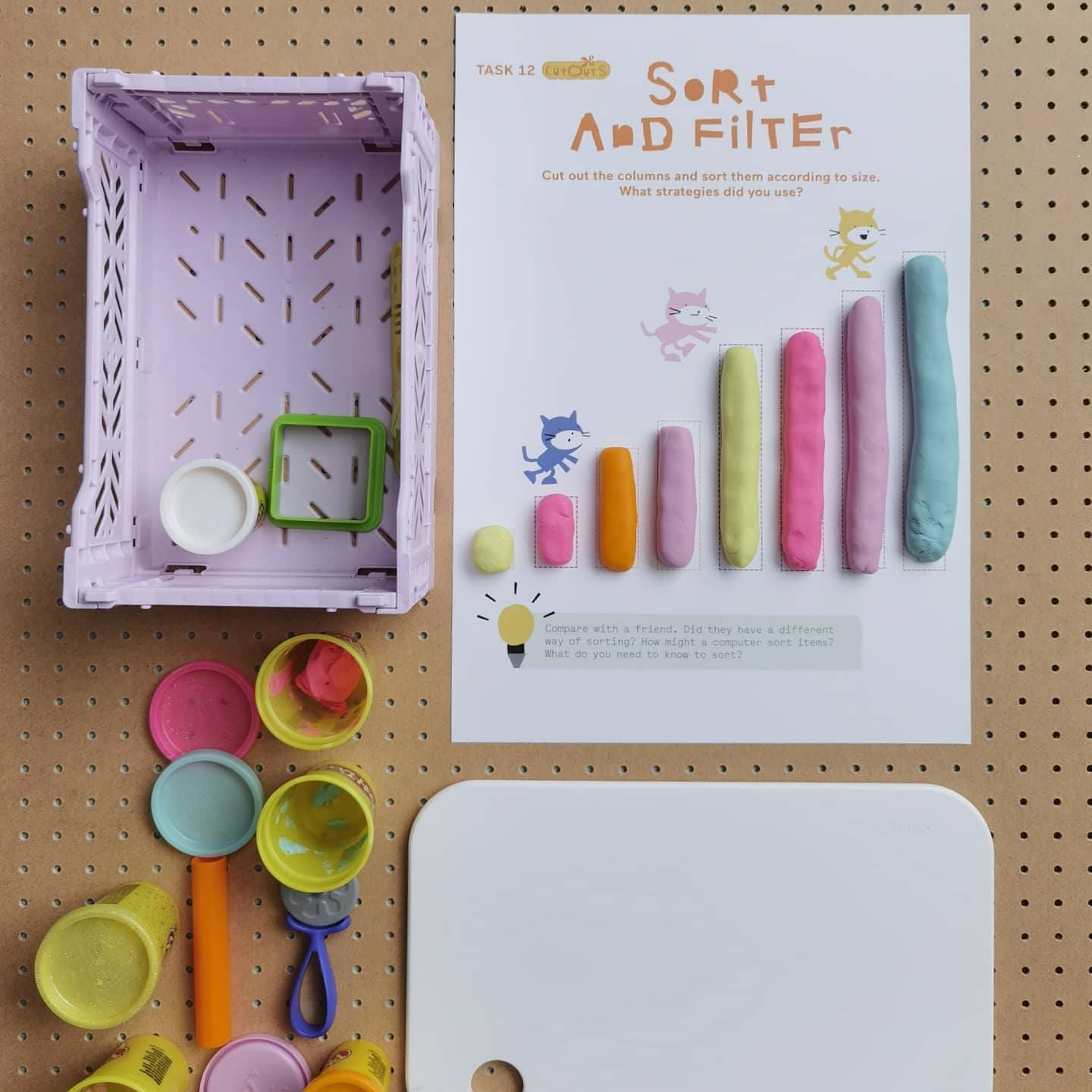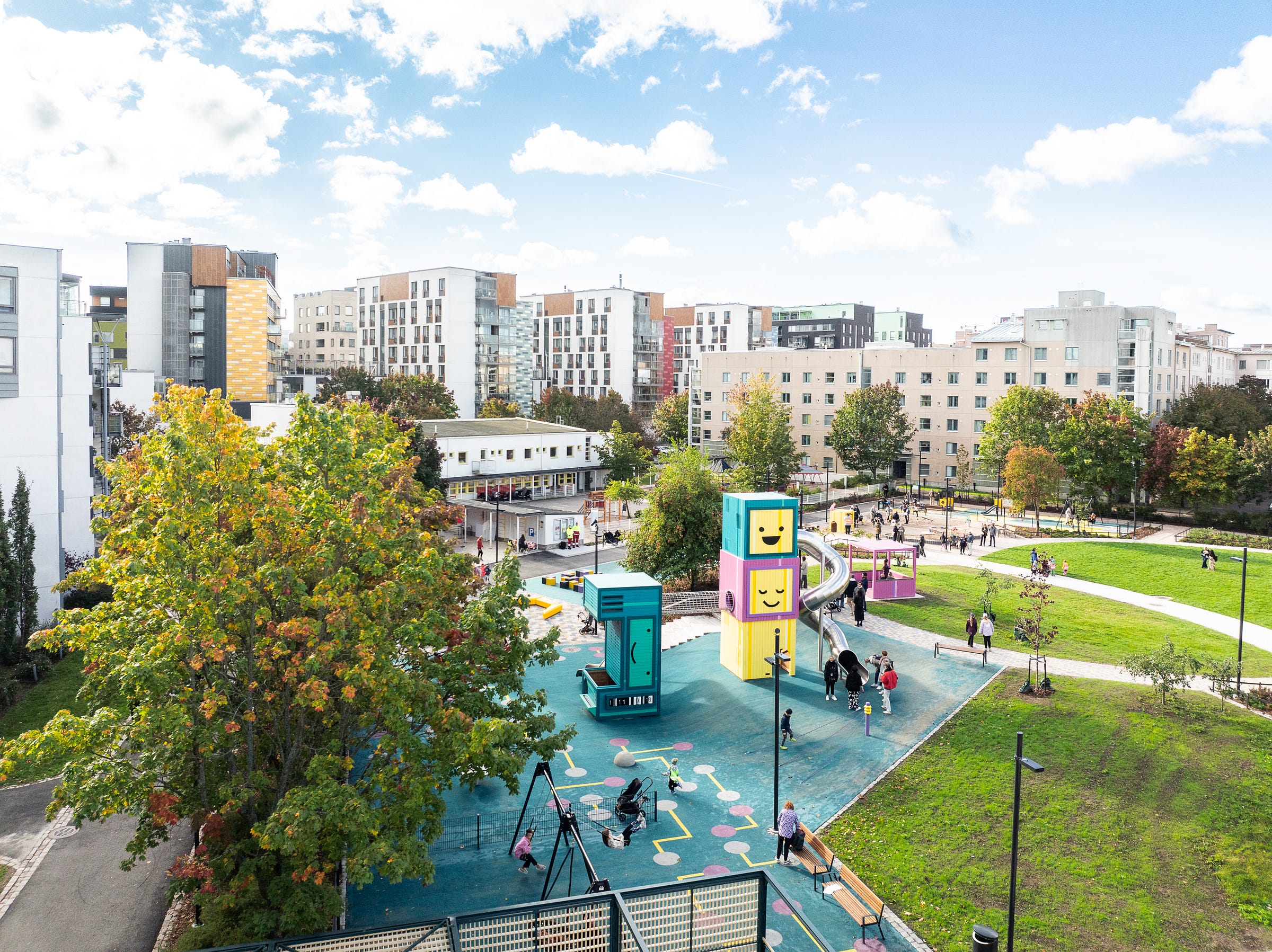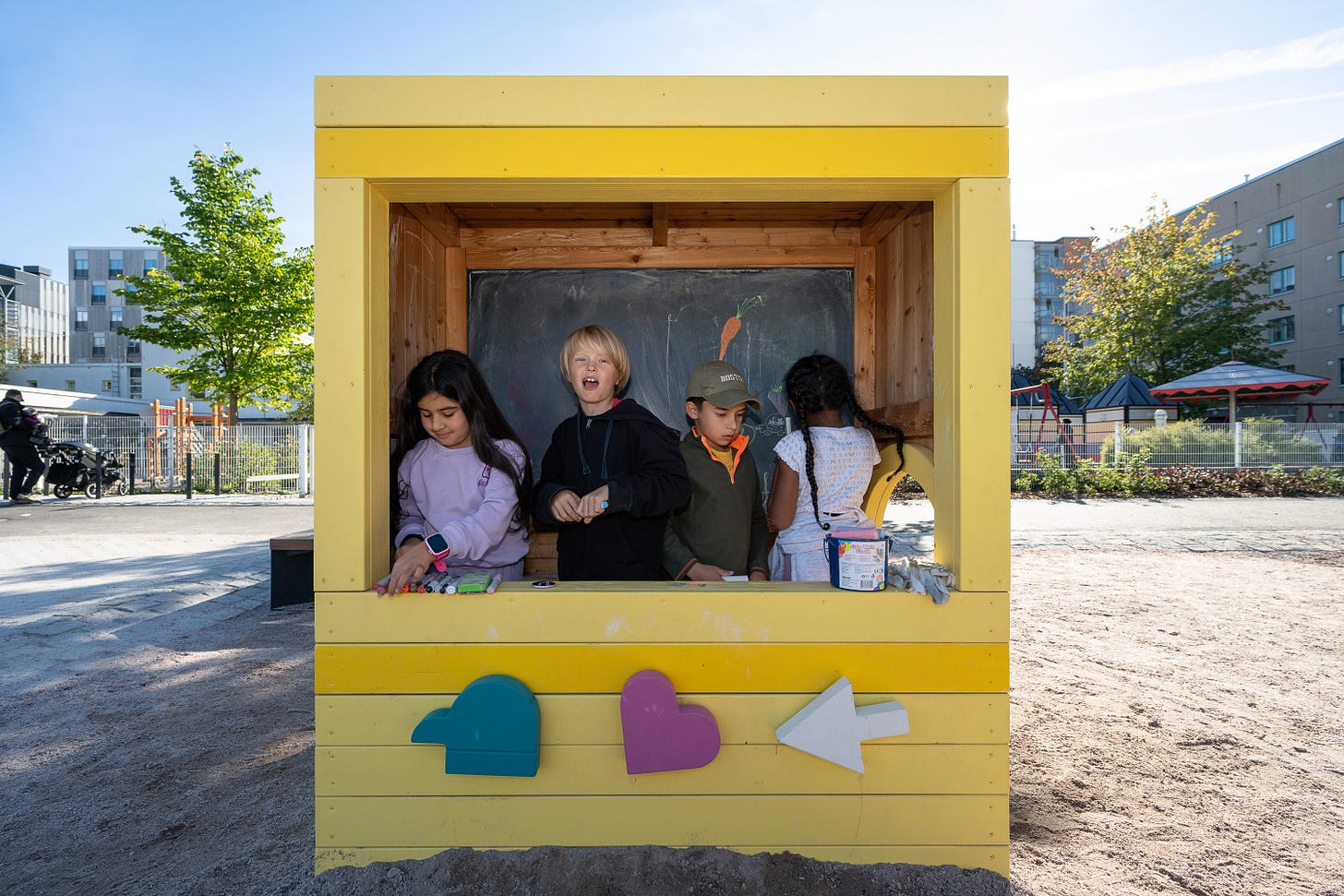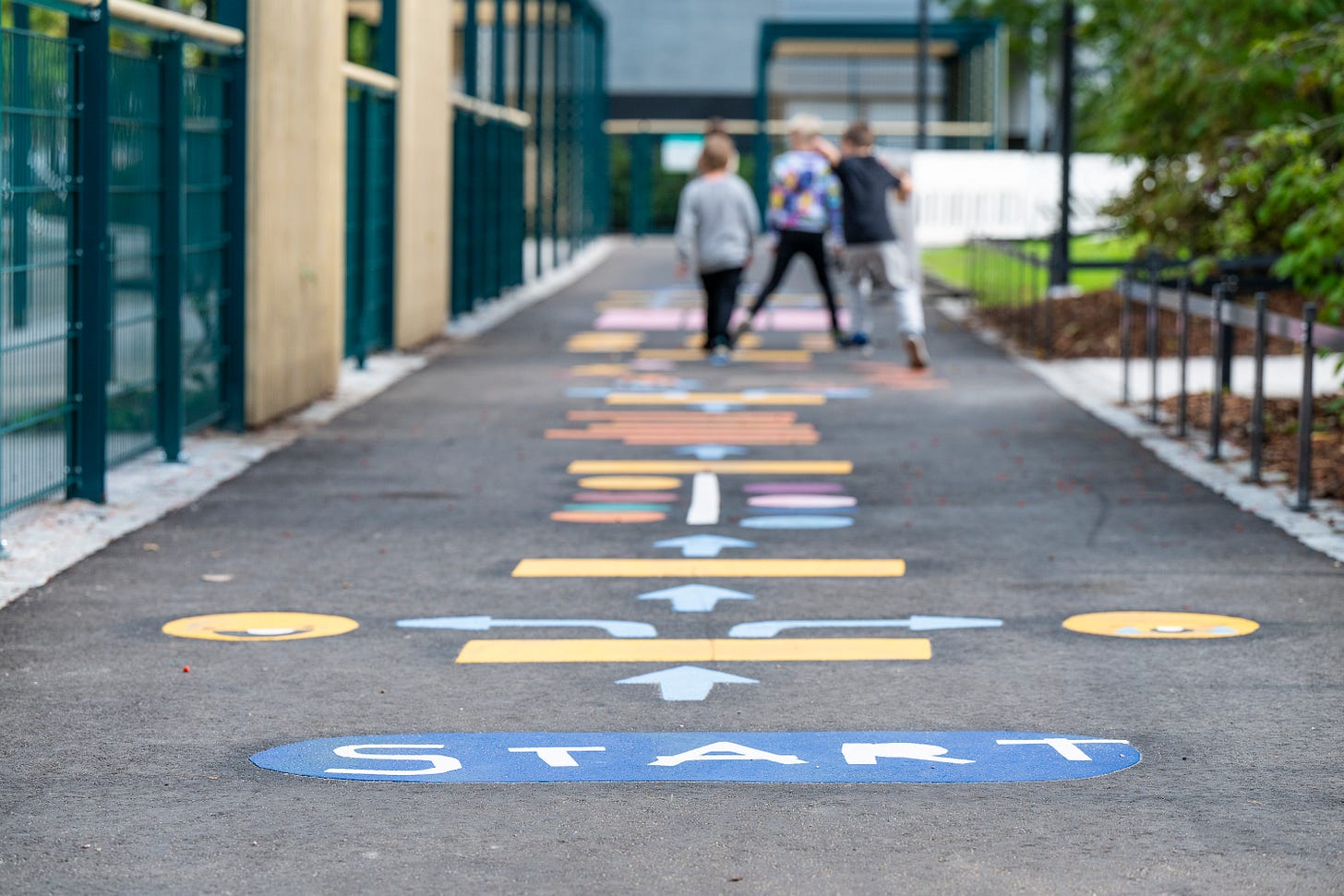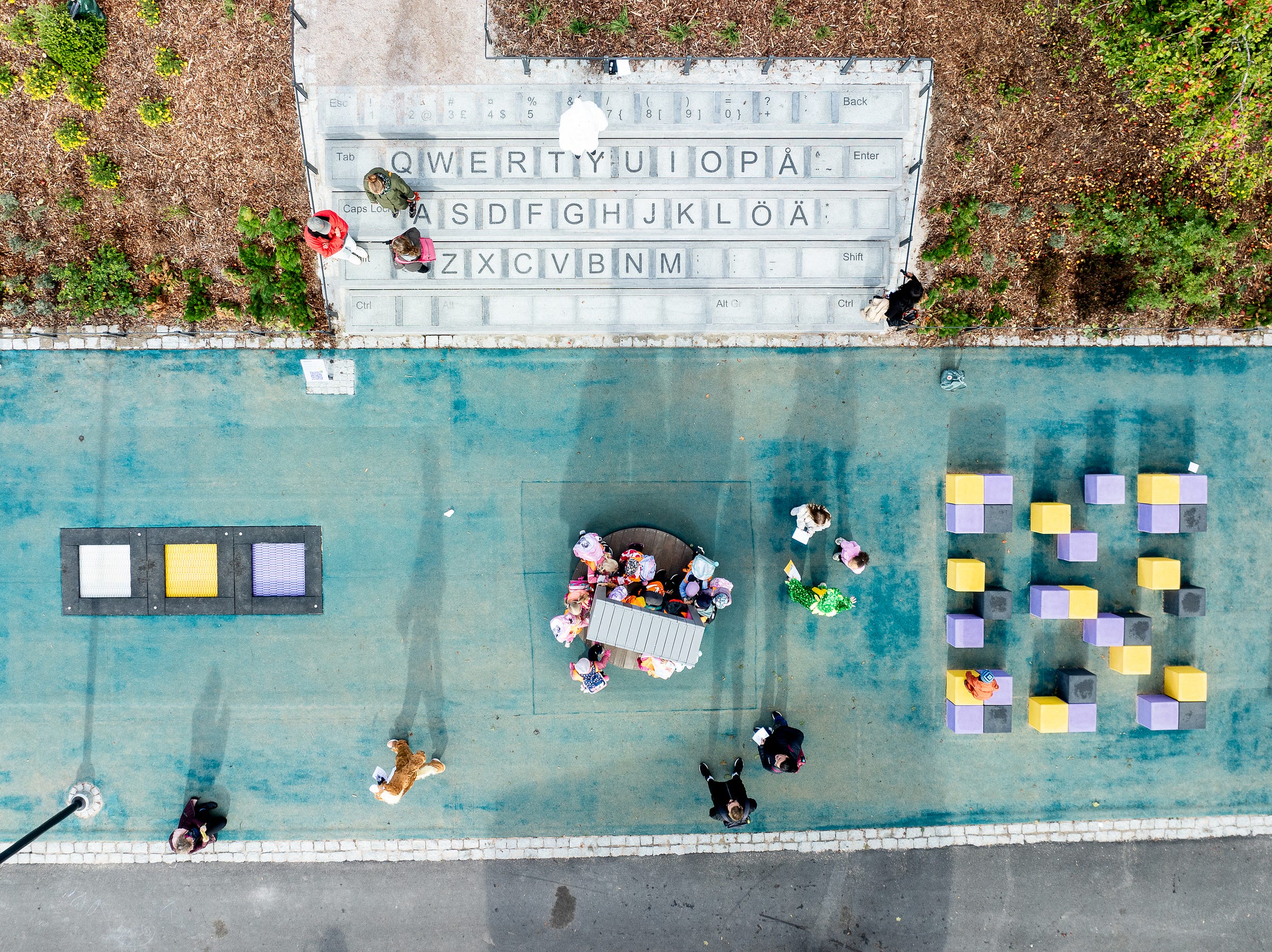Urban Technology at University of Michigan week 234
A City Playground, but make it about Computers
My son Fred, four years old, assumes every car can talk to you and every light bulb will mostly do as you ask. Kids who play on a playground in 2025 (even those without a parent who’s a wonky professor) will never know a city where digital technology is absent; they will be immune to the false dichotomy of meatspace vs cyberspace that olds like your author 🙋 grew up with. Here in the era of urban technology it’s impossible to ignore the risks of technology underpinning into everyday life—CO2! taking jobs! cyber attacks! hyper-automated discrimination!—and yet that’s not a predetermined outcome. The future could also be punctuated by renewably powered mesh networks, post-quantum encryption, and humans very much still in the loop. But getting to that future requires a belief among younger generations that technology is a thing they make, and can make to empower the lives find meanigful.
As we’ve been building our degree program in urban technology I’ve repeatedly come back to the writing, illustration, and teaching of
as an inspiration for how to create a feeling of open-ended possibility about technology. And then she designed a playground in Helsinki. A whole playground! It’s a place where kids can run, jump, slide, and stomp their way into an understanding of computing. I had to know more.💬 Hello! This is the newsletter of the Urban Technology program at University of Michigan, in which we explore the ways that data, connectivity, computation, and automation can be harnessed to nurture and improve urban life. If you’re new here, try this short video of current students describing urban technology in their own words or this 90 second explainer video.
🛝 Rage with the Machine: Interview with Linda Liukas
Linda Liukas is an enthusiastic person, full stop. Seriously, it’s impossible to watch one of Linda’s ‘Love Letters for Computers’ and not get excited. Her joyful way of being imbues the children’s picture book series Hello Ruby, which she started as a wildly successful Kickstarter campaign and has since been translated into nearly 40 languages and spawned multiple volumes. In addition to writing and illustrating the Hello Ruby books, Linda is a keynote speaker, newsletter writer, workshop host (design your first computer! find the internet hiding in plain sight!), and recently led the design of a playground in Helsinki, Finland, where she’s originally from. We spoke with Linda via Zoom from her home in Paris to learn about how this new playground brings the world of Hello Ruby and the wonders of computing to life in physical space.
BRYAN BOYER: What’s your take on teaching kids about computing and coding when there’s so much chatter about AI replacing humans in that work?
LINDA LIUKAS: We shouldn't be teaching the “what” to code. We should be teaching the how: how things are made, how they function, how they work. I don't really care if kids can write the syntax of coding. There's very little of that stuff. I think when you have a deep curiosity and care for something, you will learn the “what.” Getting kids curious, getting them motivated, and offering them a first experience [with computer science] is what I care about.
I started with coding, then it became computer science, and now computation might be the next iteration. “Computation” is still a little academic and philosophical, but times change, and we need new words to describe what it is like to live in a world that is more and more designed by computers. I think computation might be the word I’ll start [using] next.
BRYAN: This sounds almost like building empathy with how the machines work?
LINDA: Yeah. I have a lot of role playing activities in what I do. Like can we see the world like a high frequency trading algorithm? What if you were to play out how a CPU or a ROM or a RAM works?
I think drama education is actually fairly interesting in this context. One of the activities I've borrowed from Ingrid Burrington is called “Networks of New York”. She has a field guide of what kind of internet related networks there are. I do the same with kids where they actually need to walk around in their school yard and spot things that belong to the internet. It's funny because kids are so observant and notice thing like those gray boxes that typically go right over grown-ups heads. I think it's that sense of sort of curiosity, noticing things around you, and asking like “What is this?,” and “What does this belong to?,” and “Where does this fit into my physical surrounding?” This is the type of thing that interests me, as well as learning to write perfect code in Python.
BRYAN: Where did that idea of embodied learning come from? Do you have a background in drama?
LINDA: No, but I loved role-playing as a kid. Edsger W. Dijkstra says anthropomorphizing things is a sign of professional immaturity; that we shouldn't [project] too much human-like capability onto technologies. But I think the only way we understand the world is through the human perspective right now, so I try to anthropomorphize things. Children's book authors luckily get a pass in this because the world of children's books is full of living, vibrant objects. And maybe that's the sense I want to have when interacting with computers. They are these enchanted objects that come to life, and there is a possibility for something to happen when we interact with them. Drama and narrative are really tools to speed up time and peek into the future.
BRYAN: How does this manifest in the playground you designed?
LINDA: I've been working on it for four years now and it is the world’s first computer themed playground, located in Helsinki’s Ruoholahti neighborhood. It got started during COVID times when playgrounds became a lifeline for a lot of families with kids. They were the only places where we were allowed to socialize.
While I was writing the second Hello Ruby book in 2016 where Ruby falls inside of a computer and she meets the bits, and the logic gates, and all of the different components that make up a computer, I had this idea that it would make a wonderful museum exhibition. It would be so cool if you could crawl inside of a computer!
So it had been in my head for almost 10 years at that point and then I was there at the playground and I realized that, oh, it shouldn't be a museum exhibition, it should be a public playground.
BRYAN: Were there any surprises in the process of bringing it to fruition?
LINDA: [Four years was] fast compared to what people had told me. There was so much support across political parties, across neighborhood associations, everything. It faced very little backlash.
One of the big challenges for me was figuring out how to scale up the “software,” or educational things that happen in a playground. In my head, the physical structures or “the hardware” was clear, but then there was this idea about the software of the playground and how kids would actually interact with the space.
There’s a very human component to parks in Helsinki. Grown-ups program activities and afterschool clubs at public parks. I knew I wanted to do something like that, so we designed a curriculum for early childhood educators and teachers and playground workers to build tours and activities. I'm hoping that curriculum planning like this becomes a standard for playground manufacturing in Helsinki.
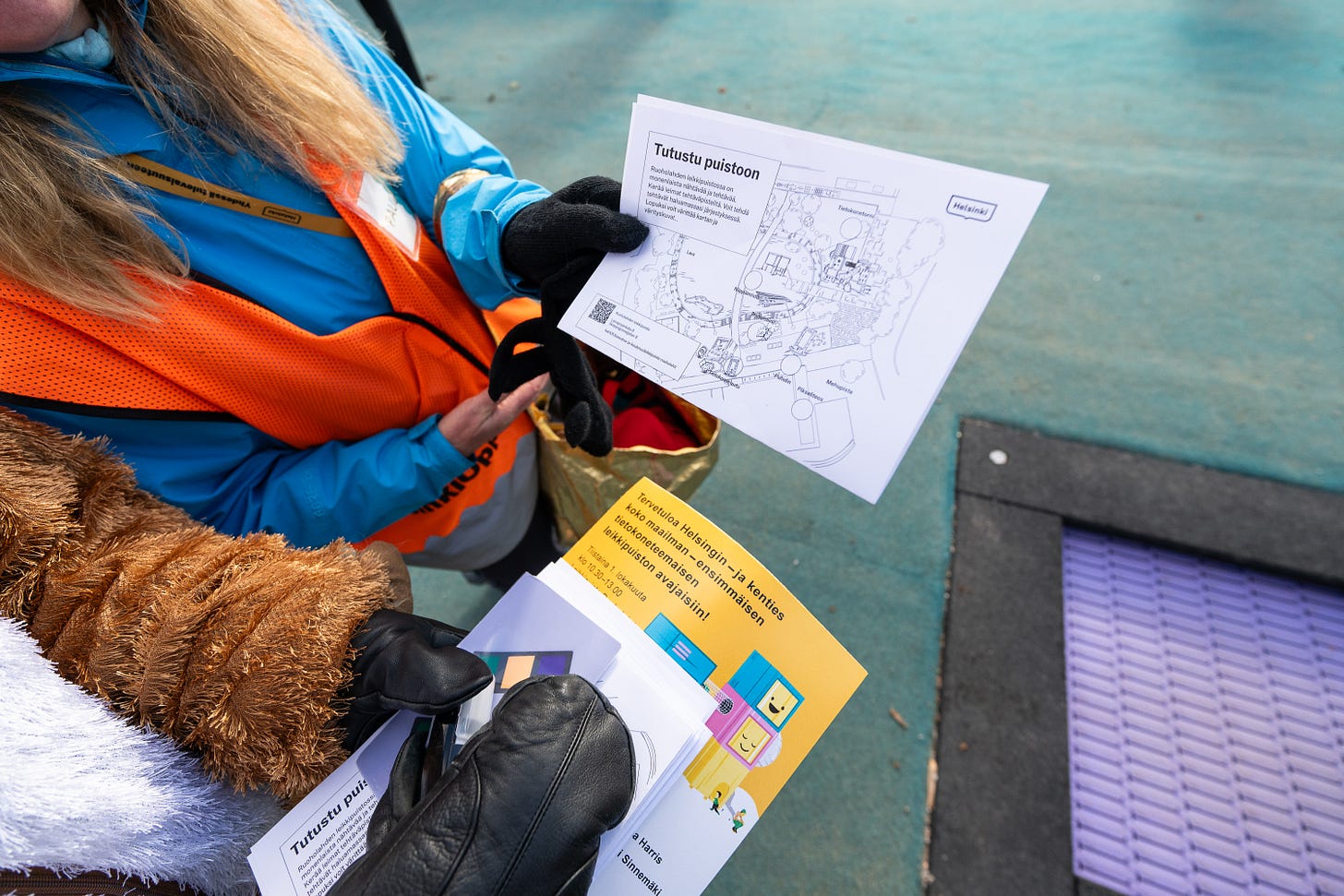
BRYAN: When you're at the playground, are the interactions completely physical or are there digital components to interact with?
LINDA: It's mostly very, very physical. We worked with this Danish company called Monstrum that specializes in play sculptures. We wanted to do something that pops and is bright and playful. For instance, there's a gigantic keyboard that is made out of cement where you can jump on the different keys.There's a rotating phone that you can perform a TikTok dance on, or like just hang out in, but then there are QR codes that offer you more information.
The playground equipment has little prompts like, “Say you input data in the computer, how can you sort your sand equipment in the order of size?” Another big part was light. How can we use light when designing for a city that is dark for much of the year, to make the playground more approachable? But no screens is really what we aimed for.
BRYAN: Is it functioning the way that you expected?
LINDA: I think when you're doing something for the first time, there is a gap between what you imagine in your head and what reality looks like. I didn't realize that the park is so large. It's a gigantic park, so the park computers ended up being quite a small part of the park in the end. But I think it's actually a good thing because the neighborhood associations really wished that we would keep the open space, and the open-endedness of it.
I think it's functioning the way we anticipated and hoped for. I am curious to work with the students because they’re a generation of kids whose public spaces look more like Fortnite lobbies than a public playground. It's a generation whose Fortnite islands also get updated frequently. This was actually something I suggested to the city: what if we budget and plan for updates to the park, like the way that ‘loot boxes’ get dropped in the Fortnite?
We are still doing a lot of reflecting on the park and its function. The nice thing is that there's going to be more parks and playgrounds in Helsinki all the time, and my personal wish is that I get to do more parks and playgrounds in general.
BRYAN: You are someone who has done a lot of different things in your career. Do you consider yourself a playground designer or is this just another color to add to your rainbow?
LINDA: I think it's a color, but it feels like a very meaningful color. The more I look into it, the more I realize that there is such a big overlap between architects and computer scientists. There are so many shared ideas between them, and your degree program is one of the most visible examples of that. It feels like a very fruitful area to keep working in.
BRYAN: What is your favorite city and why?
LINDA: Helsinki. Because it combines Nordic practicality with offbeat weirdness. It has this sense of taste and design, but then it also is very hands on and scruffy in parts. It's a very human city.
These weeks: Acoustics again. Emails, then more, then more and more. Review planning already. Setting up a new SpEcIaL pRoJeCt. I’m going to call it Project Katamari, but I don’t know if anyone else will go for that. 🏃




